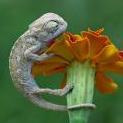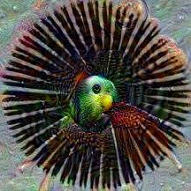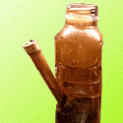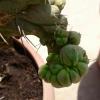Leaderboard
Popular Content
Showing content with the highest reputation on 02/09/15 in all areas
-
4 pointsHi all, I have some special seeds to get to the right members. 10 seed and soil packs to giveaway. Each pack includes: 10 x Acacia Courtii seed + Rhizobia 10 x Acacia Phlebophylla seed + Rhizobia Due to the scarcity and relative difficulty of germination with these species, I am looking to get these seeds to members who have already developed some propagation skills with this genus (Acacia). Post some pictures here of acacias you have grown from seed (honesty required), doesn't matter what species. If you got the goods (skills) you get the seeds, I will pm you to forward the pack. Terms and conditions: To keep the gifting going and to get these trees out there, members who apply agree to giveaway at least one seedling of each species (if you successfully grow multiples) to a fellow SAB member by posting it on this thread! Open Worldwide
-
2 pointsawesome, this is my gallery http://www.shaman-australis.com/forum/index.php?app=gallery&album=891
-
2 points
-
2 points
-
1 pointMandragora Hey anyone growing or having any experience or cool link for mandrake cultivation, especially of established plants ? (only saying this because i dont have any seeds yet, so I cannot talk about growing from seed) mistakes I made so far *needn't more free draining soil, more perlite, f.e. *hurried them a bit in the begining, lost a few to rot, combined with heavy rich soil I would like to discuss how you rest, at the dormancy period I was reading that some times the plants stop growing if they reach the bottom of the pot (therefore they need big pots) , but its difficult to understand if its resting for dormancy (depending on hemisphere and species) or just stopped for a while (dried current rozette) and will continue / sprout a bit later again. So seeing the majority of my plants driying out, and only one having flowered ( well they were transplanted from the wild so they're had a stressful year), I decided to carefully uproot them after I read a while, in case they were already dormant and I was still watering. On the other hand, some that had dried earlier, started throwing leaves again!, so I left some in their pots too. Thankfully they are ok, indeed they all had reached the bottom of the pot, the new roots are satisfyingly fatty given the circumstances - also TWO of them are starting a rozete (leaves) , and I think another too. http://postimage.org/'> so my questions.... 1. what about those broken rootlets and also that tiny little plant? will in survive dormancy till september or its too thin and it will dry up? What about planting them now (supposely, a month or less before their nomral dormancy) ? Can they loose their circle? What about planting them, but leaving a piece above... What about planting rootlets of mandrake to propagate horizontaly? anyone done it? 2. I am thinking of taking also some fatter root cuttings - tstarted hinking about them like underground cacti. Is it a good idea? and if I take them, I should better let them rest , then re pot in september (begining of season) ? 3. Can they be hurried up? and if yes, then I suppose the critical period which one should not push them but rather let them rest is the resting/dormancy after each years flowering? 4. How do you let it dormant (plant or root without soil) ? like bulbs? (f.e. bulbous flowers) dry and cool place, away from sunlight and so? Cheers and hopefully there are a couple opinions on these matters grow on
-
1 point
-
1 point
-
1 pointGee I dunno niggles, I wouldn't risk it. Chickens are pretty inquisitive and will try anything, and also peck at shit just for fun. I had a chook that enjoyed destroying styrofoam worm farm boxes, lol. Chooks are great, but they are a bit like feathered goats in my experience. EDIT: I might add that you would be thinking the chook destroyed the foam box looking for worms, but she also picked at the foam that cushioned fish tanks, the foam insulation in a shed.... she was a foam addict. Lol. But yeah, chooks make good additions to the yard. I would like to get some quail. Newly hatched quail are so cute. Tiny little things...But there are too many cats in the neighbourhood to have free ranging quail.
-
1 pointThe Cult - ELECTRIC (FULL ALBUM): http://www.youtube.com/playlist?list=PLrsbQkjm7ZKD7jvH8BS1P0L1Nt9xn3UPU
-
1 point
-
1 pointhttp://www.nasa.gov/feature/goddard/hubble-sees-the-wings-of-a-butterfly-the-twin-jet-nebula/
-
1 point
-
1 pointHi, I have no first hand experience with antipsychotics but I thought I could leave you with this, as what you said seemed very relevant to the content : http://upliftconnect.com/shamanic-view-of-mental-health/ Good luck
-
1 pointI always struggle identifying nutrient deficiencies / toxicities / unavailabilities and things like bacterial and viral infections. Everytime i solidify nutrient issues with backed up reasearch, a curve ball comes and everything crashes down and leaves me in utter confusion. Different plant genus and species seem to show different symptoms of the same issues, indicating to me different ways of metabolism/storage/environmental interaction or suceptabilities and specific contexts of a given issue. Group with this different soils, environmental influences, different cultural practices, fertilisers and their applications and local and introduced influences be it animal/insect or product availabilties and their sources, it gets to be a hair pulling exercise in diagnosis. Very limited numbers of people spend their lives dedicated to studying plant physiology and interactions, whilst even then their knowldge can be a specialty limited to a genus, species and or within a very specific environmental context be in a field, greenhouse and state or country. You can read multiple descriptions of things like nutrient deficiencies and get wildly different answers, it often takes hours of researching to find a single sentence that can bring all things together, and context can confirm, deny and sway the information. I think there are endemic viral issues with the species we work with, or possibly all are simply infected due to our very limited plant numbers and proximity of specimens with some possibly being suceptible, others immune, or possibly some just showing symptoms whilst others carry but never show or will only show given a specific trigger. I get similar chlorosis all through my collection, halo type rings, small pin chlorotic spotting, running/weaving/spreading type chlorosis. I think some are viral and some are nutrient issues. It can often be worse for me in wet winters in poor soils with out of whack nutrient profiles in the soils and applications. Currently (and generally always have) am getting a lot on TBM's and PC type pachs, not exclusively but they always seem the most obvious. Yowie seems more susceptible to tip pin like chlorosis from cold / frost 'damage'. Mesophyllic cell collapse seems to fit a lot of the time, though i'm lacking education and understading regarding it's causes. Calcium I think can be the cause sometimes, due to a deficiency or unavailability. It can be from cold fluids/soils/air, but also from lack of water and dry environments. I've seen photos of water stressed (drought i think) halo like chlorosis mesophyllic cell collapse in citrus essentially identical to PC type pach symptoms. Although the halo type chlorosis feels viral to me for unknown reasons. These chlorosis symptoms of potential nutritional and or viral/bacterial origins as well as black rot are something I really want to understand more so they can be actively avoided and increase education of plants and environments. I think the answers will primarily come from understanding soils, it's an uphill battle particularly with fucked up education and commercial interests with fertiliser companies that we are unavoidably intertwined in. Clarifying information with such companies is more often than not a completely useless excercise with parroted tow the line rhetoric. If people are unaware (in my opinion) the agricultural/horticultural industries are essentially the same and or inextricably tied in with the same issues that we are (or are becoming) aware of in relation to health care / pharmaceutical industries agenda.
-
1 point
-
1 pointHi, so I have a few Mandrake popping up. When is best to transplant into their final spot. When they have their first true leaves, or further than that? Cheers.
-
1 point
-
1 pointI wish I could make something with the pulp of of the fruits... thinking of perfume... where is that austrian dude ? [have drank beers today, yeah, my nephwe left, what do you want?]
-
1 point
-
1 point
-
1 point
-
1 pointhehe not trying any real broomstick rides any time soon. the plant on the right which is the biggest in the pot is doing a secord round of a new strong rosette and a new round of flowers... It hasn't produced any fruit because it was the first to start flowering when none other were. Another evidence they are not self-fertile and yet another is that a friend has a hude plant flowering every year but he has never seen seed.
-
1 pointI am pretty sure now that the pollination I tried to invoke must have played a role, or this was an extreme coincidence, and fruits just happened to be where I did my tricks. or maybe I am the devil. or the plant is the devil. or maybe both. on thing is for sure: if you unroot mandrakes from pots, you dont die. It seems you have to unroot from habitat, or some location of spiritual importance, who knows. And I got some experiments going, not telling yet! sure I am gonna try to 'bonzai' one of them, you got that! It seems to have a bigger growing period here than back in the island, but it seems to be doing fine, some plants are again making leaves, after flowering... This is a very special plant while flowering. The flower might be open but might not give pollen. the male organs of the flower are purplish before they set out to give pollen. You can see the one that got both fruit and flowers. There was nothing I could do today, there was no pollen. (today pics)
-
1 pointI found this excellent paper from Israel (M.automnalis is studied ) about aromatic substances and analysis of mandrake fruit. its not really around cultivation but its got decent information overall and its worth taking a look! http://www.us.edu.pl/uniwersytet/jednostki/wydzialy/chemia/acta/ac17/zrodla/08_AC17.pdf the cuttings that are supposed to have rooted have not sprouted yet. here are some photos from some days ago and some photos now... this pretty stressed rosette ahs given up the plant decided to resprout from another side! another one coming to bloom I was trying (several days to pollinate them), then I read they are self fertile... I dont know how easy it is to get seed and how long does it do to evolve from successful pollinatio to starting to form a fruit.... I guess we will see...
-
1 pointThanks for input. I am quite optimistic, as I waited quite for some time for the cuttings to heal, and then this is the right time for a mandrake plant to be potted, according to their schedule in the wild. The ones what had already sprouted seem pretty happy! I also tried this that is the top of the root is slightly protruding...















